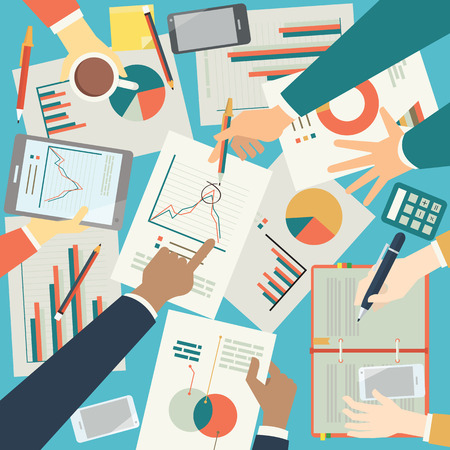
September 13, 2016
If you read articles in the c-store industry journals or magazines it is hard to find an issue without some sort of mention on the value of analyzing your data and using it to drive your business. A lot C-store operators feel like they have so much data it feels like a Big Data mountain to climb in order to just get started. Worse, there is a back office system and a host of Point Of Sale data sets that must be navigated before they can even start looking for the type of data they want to analyze. Without a dedicated resource, it can just be too overwhelming to eliminate c-store analysis impediments. it feels too hard for many.
In the place of analytics, instinct and experience are used to find problems. This approach works well if you know the problems. However, as c-store counts increase, the number of problems increase as well. Thus, the ability to monitor solutions becomes more time consuming. In short, the first step in analysis paralysis creation is the absence of a starting place. Data analytics tool allow data to be used. Further, it provides measurements to assess results and provide direction. There are three key areas where they hold the most value.
-
C-Store Analysis Saves Time
The analysis and correlation of data is done for you saving your time for more productive activities. As an example, let’s look at a daily report where sales are lower than you expected. Your first instinct may be to look at the Customer Count in that store for a day. When you do, you find that the count was actually higher than normal, which leaves you scratching your head. So, you go to another report such as inventory levels, or perhaps voids and returns, and maybe even time sheets to see who was on staff at the time.
You hop from report to report to see where things went wrong. After an hour or so, you may find that the reason was because the average transaction amount, or basket size, was lower than normal. So what you ultimately discover is that you need to find ways to increase the average transaction amount to realize the value from the increased customer count at that store. When you multiply that effort and time by the amount of stores you are managing, you can begin to see where instinct and experience would be considered, good enough. This describes one of the core values of the Business Intelligence tool. It saves time. Time savings is a big motivation to eliminate c-store analysis impediments.
-
Analysis Finds Issues as They Happen
Some problems are quick an easy to spot, such as no sales spiked due to a bad cashier. No trending is needed. You can just look at the numbers. Other problems are much more subtle and need more data points to see. For example, a daily comparison over time may show a 1% increase in certain sales over the last few weeks. Conversely, you may see that a new store is not growing fast enough based on weekly trends. It shows the rate of change.
By analyzing the many aspects that are involved in a C-Store, Business Intelligence tools can tell you how to optimize your revenue. Most have trending capabilities where you can look at results over time. This will tell you when to order, what staff levels are needed when and when you may want to increase your marketing through out the year. You can reserve money when you can and only spend it when you need to. Yes, this by far is the most time consuming piece of analysis because you are looking at a large variety of data over time.
There are many reports that have to be pulled together and plotted to show what is happening over a time line. Instinct may tell you to keep kerosene levels low and propane high in the summer. However, your instinct may not tell you to order less snack food or health and beauty products at that time. Trending shows you the patterns of performance. They show you when they peak and when they fall throughout a given year. Even having a person dedicated to this type of analysis may not gather it all. This leads us to the third reason why BI tools are needed in a C-Store company
-
Eliminate Missed or Forgotten Problems
One of the simple benefits of a BI program is providing objective data regularly. Some simple benefits occur when the analytics require timely input of daily results. Regular reporting creates a cadence of accountability. It sets the tone for better results through problem alerts.
Business Intelligence monitors all aspects of one’s business. It shows views that identify problems. Through a few clicks, one can find the proverbial needle in the haystack. Good ones will have alerts and alarms. They notify you when something is in decline. It lets you know as soon as the decline begins to offset problems early. These tools watch numerous aspects that impact your business. They allow you to focus on the larger drivers of your revenue while only letting you know about the smaller ones when they need attention.
C-Store companies are very fortunate in that they already capture the data they need in order to drive their business upward. Daily POS data is readily available and covers all aspects of their business. BI-based decisions use objective facts. POS data trends show where money can be saved and waste eliminated. Business Intelligence tools are what make the use of their data practical and possible. These 3 ways allow operators to eliminate c-store analysis impediments.